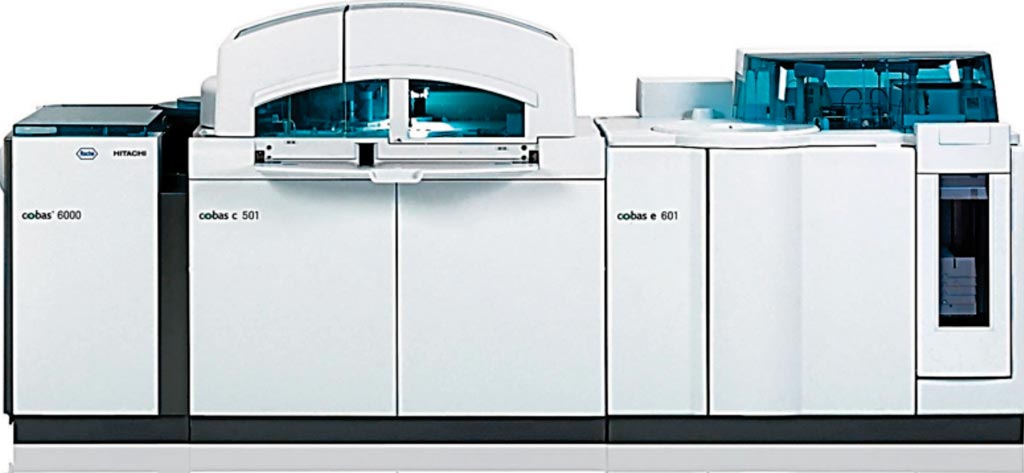Lipid Biomarker Concentrations Associated with CVD Risk
By LabMedica International staff writers
Posted on 08 Jan 2018
Circulating concentrations of lipid biomarkers are consistently associated with cardiovascular disease (CVD) events and thus are considered major indicators of metabolic health, but the evidence for a relationship with cancer risk, however, is not entirely consistent.Posted on 08 Jan 2018
High levels of low-density lipoprotein cholesterol (LDL-C) have been consistently associated with up to 1.7-fold increases in risk of CVD in observational studies. Other lipid parameters, such as high-density lipoprotein cholesterol (HDL-C), triglycerides (TGs), or lipoprotein (a) (Lp(a)), have also been increasingly investigated in relation to risk of atherosclerotic CVD or coronary heart disease.

Image: The Cobas 6000 modular analytical system (Photo courtesy of Roche).
Scientists at the German Cancer Research Center (DKFZ, Heidelberg, Germany) selected a case-cohort sample out of the prospective EPIC–Heidelberg study, including a random sub-cohort of 2,739, and 1.632 cases of cancer, 761 cancer mortality, 1,070 CVD and 381 CVD mortality. Concentrations of lipid biomarkers were measured in pre-diagnostic blood samples. Participants were recruited between 1994 and 1998 and were aged between 35 and 65 years.
Basic clinical chemistry measurements were performed including serum concentrations of total cholesterol (TC), HDL-C, TG, apo(a), Apolipoprotein B100 (apoB-100), and Lp(a). All measurements were made using the Roche Cobas 6000 analytical system. The Friedewald formula (LDL = TC – HDL – TG/5) was applied to calculate LDL-C values. High levels of circulating apoB-100 and TG were inversely associated and high HDL-C levels were positively associated with breast cancer risk. Higher levels of Lp(a) were associated with an increase in prostate cancer risk and high levels of apo(a) were associated with a decrease in lung cancer risk.
High TC, HDL-C, apo(a), and Lp(a) levels were associated with a reduction in total cancer mortality. All lipid biomarkers were associated with risk of myocardial infarction, whereby TC, apoB-100, TG, and Lp(a) were positively and HLD-C and apo(a) inversely associated with risk. Only high levels of TG were associated with an increased risk of stroke. None of the lipids were associated with risk of colorectal cancer and with risk of CVD mortality.
The authors concluded that the inverse associations of lipid biomarkers with cancer incidence and mortality, with the exception of positive associations of HDL-C and Lp(a) with breast and prostate cancer risk, respectively. Thus, the observed cancer risk pattern clearly differs from the CVD risk pattern. The study was published on December 19, 2017, in the journal BMC Medicine.
Related Links:
German Cancer Research Center








 (3) (1).png)




